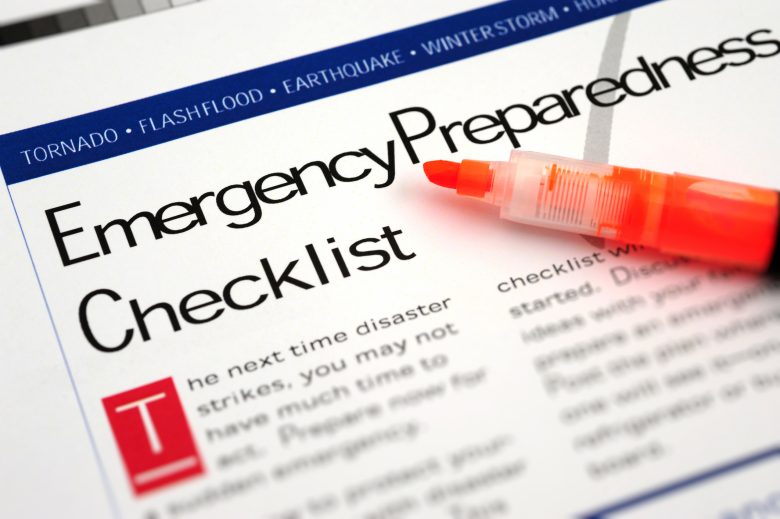Developing a robust emergency action plan (EAP) is the best way to ensure emergencies at your workplace are handled in a responsible and clear-headed way. But with so many possible hazards and emergencies, the only way to create a successful EAP is through planning. After all, it’s called a “plan” for a reason.
An EAP is not something you can dash off in five minutes, although there are templates available online to help you craft a plan. But to create a truly effective EAP, you need to brainstorm worst-case scenarios, their impact on your workers and operations, and prepare appropriate responses.
For example, do you have a plan in place should a serious injury occur to one of your workers? What would you do first? Who would you call? If an employee needs medical help, would you or a supervisor be able to answer the first responders’ questions about that worker’s allergies to any medication? These and many other questions need to be considered when creating an EAP specific for your workplace. But, while developing work-specific EAP requires forethought and dedication, there are some general rules that can help:
- Consider all types of potential emergencies, including fires, explosions, floods, hurricanes, earthquakes, civil disturbances and workplace violence. Internal hazards should also be taken into account in your risk assessment. Physical or chemical hazards, toxic material releases and biological incidents could all cause an emergency.
- Decide in advance who is in charge in the event of an emergency.
- Designate a call person who will make contact with emergency services and otherwise assists the person in charge.
- Establish a clear chain of command.
Executing the four points above can take some time, but the more thorough your brainstorming and your preparations, the easier it will be to handle an emergency should one occur. It could also be worthwhile to ask safety champions and other employees for their input—they might have ideas you wouldn’t think of.
The next step is to consider the equipment and materials that could be useful in an emergency:
- Make sure there is a phone (or several phones, depending on the size of your site) available. In the event of a power outage, a landline will work even if cell-towers fail. If installing a landline is not possible, make provisions for an emergency communications system such as portable radios.
- Prepare easy-to-follow directions for emergency services to reach the site as quickly as possible. It may be helpful to include information such as the closest major intersection or one-way streets. When people are panicked they can easily forget the address, so preparing such directions in advance could save precious time.
- Have telephone numbers written down for different emergency services and for people you will need to rely on. This may include the facility manager, supervisors and others.
- Access to (current) employees’ contact numbers such as partner, next of kin and even family doctor can be helpful in certain situations.
- Keep any relevant medical information you’re allowed to have for each worker up to date so that details can be provided to emergency medical personnel if necessary.
- Have a first aid kit fully stocked and available at all times.
If the situation doesn’t require the use of a shelter-in-place then you will have to prepare for a possible evacuation. Depending on the type of work you do and the size of your company, you might have to consider hundreds of options. However, the most basic issues to address are:
- Identify the conditions under which an evacuation is necessary.
- Designate a person authorized to order an evacuation or shutdown of operations.
- Outline specific evacuation routes and exits that are easily accessible to all employees.
- Designate one or more assembly areas (as necessary for different types of emergencies) where employees can gather.
- Design a method for accounting for all employees (and visitors, if your workplace has them).
- Consider whether you need to designate someone to stay behind to shut down critical operations during an evacuation.
- Decide how and when employees can be trained to understand their responsibilities and actions in the event of an emergency.
- Prepare and perform emergency drills.
Last but not least, consider addressing human factors in your preparations. and providing relevant training to all employees. Panic and rushing are two common states that can negatively influence people’s reactions to emergencies.
When an emergency happens, people are going to be in a rush to respond, evacuate, call the relevant services, etc. But rushing will only make them more likely to forget the crucial steps, make a mistake or even hurt themselves in the process. Panic can have a similar effect. Providing human factors training that specifically addresses states of mind can help employees maintain focus in critical times.
It’s also important to recognize and fight complacency because emergencies don’t happen very often and, as a result, nobody expects the worst to happen. In many cases, employees are likely to not have read the EAP for a long time or even remember the steps required.
Even if a written plan isn’t necessary for your workplace, you should consider writing down a formal plan, as it will make it easier to track any subsequent changes and keep on top of relevant paperwork.
There are many elements to consider when preparing an emergency action plan, from brainstorming sessions and gathering relevant materials to preparing information and training staff. One additional component to keep in mind: consider providing first-aid training to anyone involved in managing emergencies. Because you can’t prepare too much, but you might be sorry for not preparing enough.

